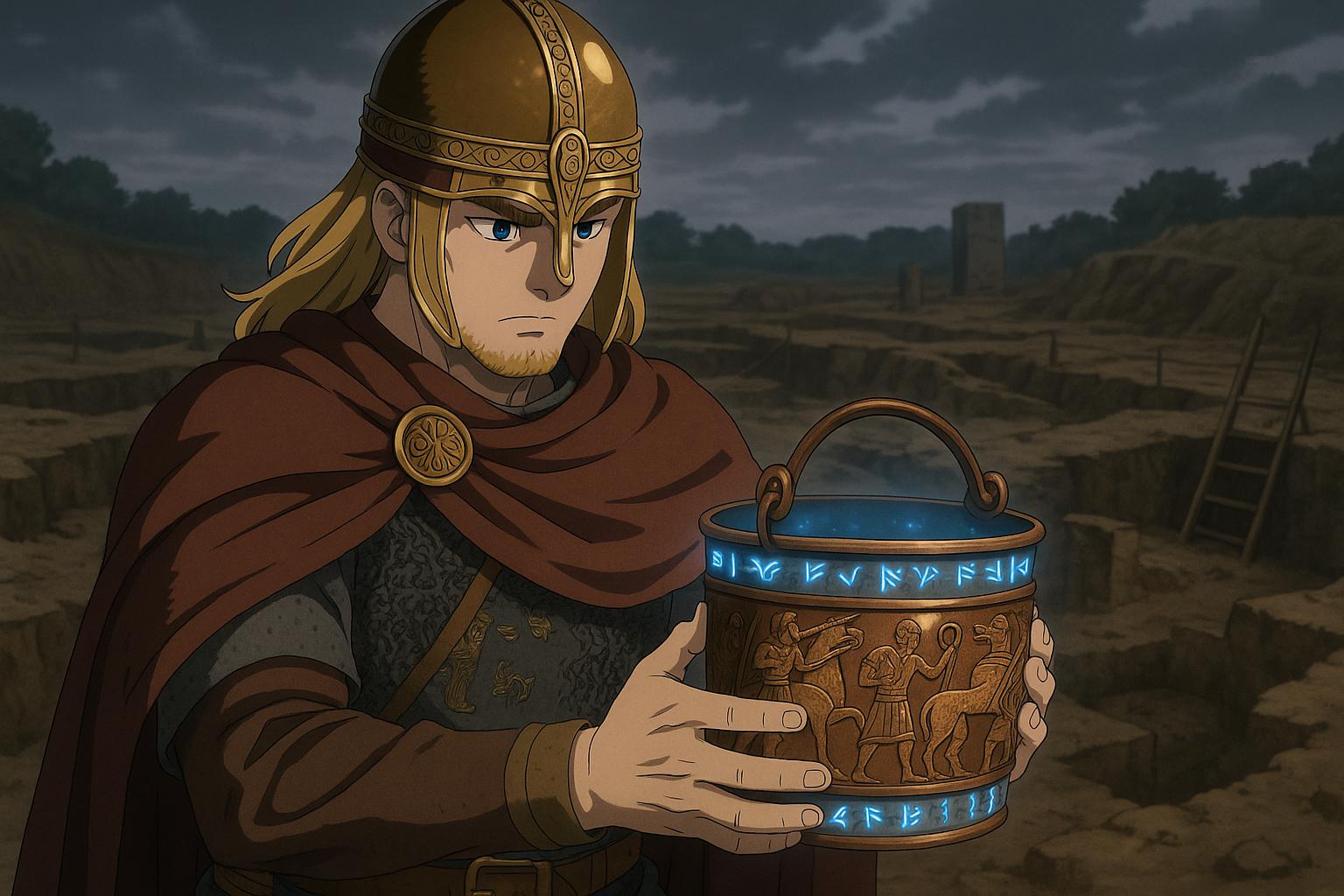After more than 1,400 years, archaeologists have made significant strides in uncovering the history surrounding one of Sutton Hoo's notable treasures: the Bromeswell bucket. This remarkable copper alloy vessel, dating back to the sixth century, has captivated researchers since its initial discovery, notably due to its striking decoration featuring warriors in combat with lions and its intriguing Greek inscription, which translates as, “Use this in good health, Master Count, for many happy years.”
Recent excavations at this esteemed site in Suffolk, a locality synonymous with early Anglo-Saxon history, have yielded new fragments and have revealed that the bucket once contained the cremated remains of an ‘important person’ from the Sutton Hoo community. Angus Wainwright, an archaeologist with the National Trust, emphasised the rarity and significance of such an artefact, stating, “We knew that this bucket would have been a rare and prized possession back in Anglo-Saxon times, but it’s always been a mystery why it was buried.” This new understanding underscores the importance of the Bromeswell bucket not just as a crafted object but as a marker of social status and ritual significance in its time.
The excavation team, collaborating with FAS Heritage, discovered the bucket’s intact base along with several artefacts, including a burnt comb and portions of cremated human and animal bones. The animal remains have been identified as possibly those of a horse, an animal often associated with high status in Anglo-Saxon cremation practices. Human bone fragments, including parts of an ankle and skull, are now undergoing DNA analysis in hopes of revealing further details about the individual whose remains were interred.
Helen Geake, Time Team's Anglo-Saxon expert, noted that the bucket's previous uses make it the first known example of such an object being employed in a cremation burial. This unique blend of cultural influences—the classical elegance of a Byzantine artefact alongside Germanic burial traditions—accentuates the eclectic nature of Sutton Hoo, a site already renowned for its ship burials and mounded graves.
Details of the ongoing study into the bucket, part of a two-year research project with Time Team, are set to unfold in a forthcoming four-part documentary special. Sir Tony Robinson, the presenter of the series, shared his enthusiasm, declaring that the Bromeswell bucket ranks among his top archaeological finds.
The historical context of the bucket is notable; it reinforces the connections between early Anglo-Saxon societies and the wider world, particularly through trade. This artefact, likely made in the eastern Mediterranean before being transported to Britain, serves as a testament to the complex interplay of cultures during this period. X-ray fluorescence analysis confirmed that the newly found fragments are all parts of the same vessel, further deepening the narrative surrounding trade and craftsmanship in early medieval England.
The preservation of the bucket exemplifies exceptional craftsmanship, with its construction techniques employing ‘cold hammering’—a process indicative of advanced metallurgical skills. Archaeological findings at Sutton Hoo continue to enrich our understanding of the region’s past, inviting visitors and scholars alike to engage with a site that has become emblematic of Anglo-Saxon heritage.
As research continues and more fragments are discovered, both the Bromeswell bucket and Sutton Hoo promise to unveil further insights into the lives, beliefs, and practices of those who once inhabited this pivotal landscape. Interest in the site remains high, with reports indicating that more excavations are scheduled for future months, ensuring that Sutton Hoo remains a focal point for archaeological discovery and public intrigue.
Reference Map
- Paragraph 1: [1], [3]
- Paragraph 2: [2], [4], [5]
- Paragraph 3: [1], [7]
- Paragraph 4: [3], [4], [6]
- Paragraph 5: [5], [6]
- Paragraph 6: [1], [3]
- Paragraph 7: [1], [5]
Source: Noah Wire Services
